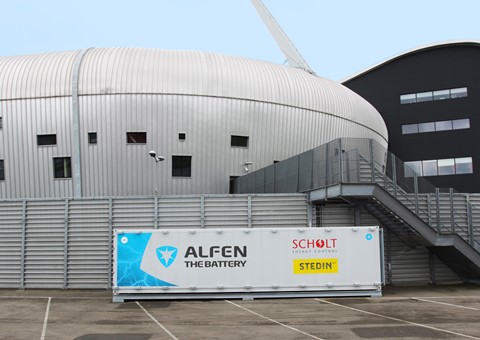
The frequency dip was very exceptional. The last time this happened was thirteen years ago. Power supply in the Netherlands was not endangered. However, the Netherlands made a contribution to restoring the frequency of the high-voltage grid in Europe. Scholt Energy used its battery pool for this purpose. This was done fully automatically within one second, because the frequency had to be restored as quickly as possible.

Primary reserve power
Scholt currently manages a pool with the largest number of individual batteries in the Dutch FCR market. This is also called primary reserve capacity. Scholt Energy has bundled all the energy storage systems it manages into a pool, the combined capacity of which is offered to the national grid operator. It deploys this power at times when the balance of the electricity network is under threat.
Battery deployment in the FCR market is fully automated via Scholt Energy's systems, as these have to deliver maximum power within 30 seconds.
Network frequency
The frequency on the high-voltage grid in Europe must be as close to 50 Hz as possible in order to function properly. A continuous balance between production and consumption of electricity is crucial for this. If the frequency becomes unbalanced, primary reserve power (FCR) is immediately activated. This is done automatically with contracted parties and is mainly intended to restore the frequency quickly (seconds/minutes). If the disruption cannot be restored quickly, emergency power is deployed within minutes. These are assets that can be used for a longer period of time (hours). Examples are industrial processes, such as cooling and freezing installations or a thermal salt bath.


